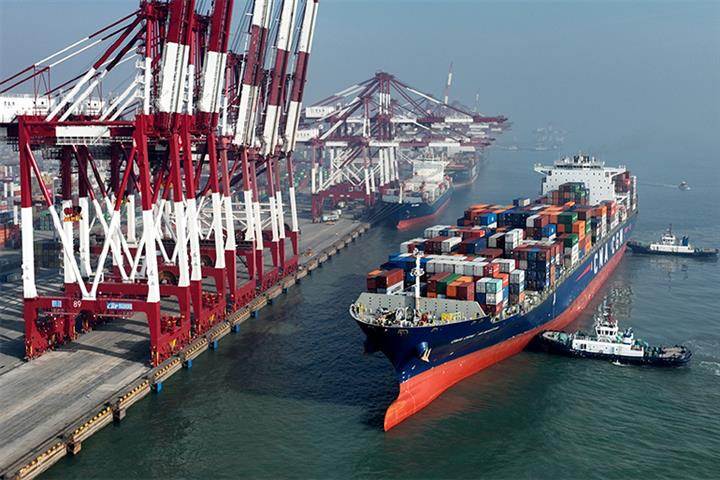 Chinese Exporters to Benefit as Indonesia Is Included in World’s Largest Trade Pact
Chinese Exporters to Benefit as Indonesia Is Included in World’s Largest Trade Pact(Yicai Global) Jan. 5 -- Indonesia is the latest country to become part of the Regional Comprehensive Economic Partnership, the globe’s biggest free trade agreement, and the resulting reduced tariffs on Chinese products are expected to be a big boost to the country’s exporters.
Indonesia entered the RCEP on Jan. 2, joining 12 other members countries in the Asia-Pacific region including China, Japan, Australia, New Zealand, Vietnam, Singapore and Thailand.
Through the ASEAN-China Free Trade Agreement, which is part of the RCEP, Indonesia is granting China zero tariffs on more than 700 products, including auto parts, motorcycles, televisions, clothing and shoes, plastic products and bags.
And in return, China will slash taxes on Indonesian pineapple juice, canned food, coconut juice, pepper, diesel, paper products, some chemicals and auto parts.
As a result, Indonesia has become a new focus for Chinese exporters. Many firms in eastern Shandong province, southeastern Fujian and Zhejiang provinces, the municipality of Chongqing in the southwest of the country and Tianjin near Beijing have already obtained certificates of origin for exporting to Indonesia.
Tariffs on Yiwu Zhihong Import and Exports’ exports to Indonesia will now be reduced to zero from 5 percent and this will significantly improve the competitiveness of its products in the Southeast Asian country, said Huang Xinzhen, boss of the foreign trade company.
Levies on Qingdao Sanmu Aquatic Products’ seafood exports to Indonesia will now fall to nil from 10 percent, saving the company more than CNY2 million (USD290,200) a year, General Manager Sun Junzhi said.
Shanghai Sixiu Compound Cloth is shifting its focus from Europe and the US to emerging markets such as Southeast Asia, Zhang Fucai, head of textile maker, told Yicai Global. Last year the company opened a new factory in Suqian, eastern Jiangsu Province to boost capacity.
Ningbo Rollmax Shutter Component, which is already focused on the European and Middle Eastern markets, will turn its attention to Southeast Asia and the RCEP nations, said Ding Yandong, general manager of the roller shutter part maker. This year they already have plans to enter Vietnam, Malaysia and other countries in the area.
China’s imports and exports with RCEP member states accounted for one third of its foreign trade in the first 11 months last year, jumping 7.9 percent year on year to CNY11.8 trillion (USD1.7 trillion), according to customs’ data.
China’s non-financial direct investment in other RCEP members surged 20.7 percent from January to November 2022 from a year earlier to USD16.4 billion (USD2.4 billion), while the country’s actual utilization of other nation state’s investments soared 40.2 percent to USD21.9 billion.
The RCEP is expected to boost China’s gross domestic product by 0.3 percent, exports by 7.6 percent and imports by 10.5 percent by 2035, according to the Chinese Academy of International Trade and Economic Cooperation. The value of China’s exports will likely reach USD315.4 billion and that of imports USD306.8 billion by then.
Editor: Kim Taylor